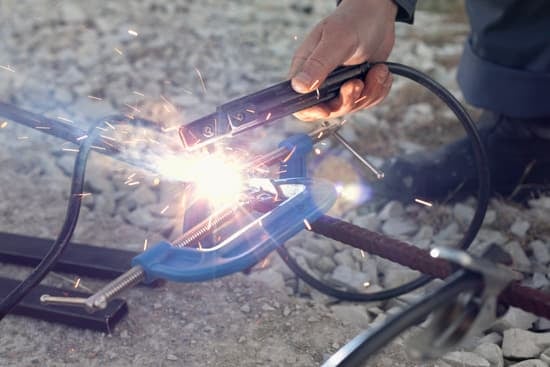Can I include home improvements in my mortgage? Many homeowners often wonder about the possibility of incorporating renovation costs into their mortgage when purchasing a new property or refinancing an existing loan. This concept allows individuals to finance home improvement projects along with their mortgage, providing a convenient and cost-effective way to enhance their living space.
Including home improvements in a mortgage has numerous benefits that can help save both money and time for homeowners. By bundling renovation expenses with their mortgage, individuals can take advantage of lower interest rates compared to other types of loans, such as personal loans or credit cards. Additionally, spreading the cost of home improvements over the life of the mortgage can result in lower monthly payments, making it a more manageable option for many homeowners.
Before considering including home improvements in a mortgage, it is essential to understand the eligibility criteria involved. Lenders typically require borrowers to have sufficient equity in their homes and meet certain financial requirements to qualify for this option. Additionally, the type and scope of the renovations may also impact eligibility, as some lenders may have restrictions on the types of projects that can be financed through a mortgage.
Benefits of Including Home Improvements in Your Mortgage
Saving money and time are two crucial aspects when it comes to home renovations. Including home improvements in your mortgage can be a strategic way to achieve both financial and time-saving benefits. Here are some advantages of incorporating home improvements into your mortgage:
- Cost Efficiency: By adding the cost of home improvements into your mortgage, you may qualify for lower interest rates compared to taking out a separate loan for renovations.
- One-Time Payment: Including home improvements in your mortgage means making one monthly payment that covers both your home loan and renovation costs, streamlining your financial responsibilities.
- Tax Deductions: Some home improvements like energy-efficient upgrades may qualify for tax deductions, providing potential savings in the long run.
In order to take advantage of these benefits, certain eligibility criteria must be met. Typically, individuals who have enough equity in their homes or are purchasing a property that needs renovations immediately may qualify to include home improvements in their mortgage. Lenders will assess factors such as credit score, income stability, and the appraised value of the property before approving this option.
Types of Home Improvements Covered
When considering including home improvements in your mortgage, it is important to understand the types of renovations that can typically be covered through this option. Common types of eligible home improvements include:
- Kitchen Remodeling
- Bathroom Upgrades
- Roof Replacement
- Energy-Efficient Improvements (such as installing solar panels or upgrading insulation)
- Room Additions or Extensions
This variety ensures that homeowners can address different aspects of their property while benefiting from the convenience of financing these projects through their mortgage. By choosing the right type of improvement that aligns with your needs and priorities, you can make the most out of this financing option.
Eligibility Criteria
When considering whether you can include home improvements in your mortgage, it’s important to understand the eligibility criteria involved. Not everyone may qualify for this option, so it’s crucial to know what factors lenders consider when allowing borrowers to finance their home renovations through a mortgage. Typically, individuals who have enough equity in their homes and meet certain financial qualifications can take advantage of including home improvements in their mortgage.
One key eligibility requirement is having sufficient equity in your home. Equity is the difference between the current market value of your home and the outstanding balance on your mortgage. Lenders often require a minimum amount of equity to be eligible for including home improvements in your mortgage. This ensures that there is enough collateral in the property to secure the additional funds borrowed for renovations.
In addition to equity, lenders will also consider your credit score and financial stability when determining if you qualify for financing home improvements through a mortgage. A good credit score demonstrates your ability to manage debt responsibly and indicates lower risk for lenders.
Lenders may also review your income, employment status, and other debts to assess whether you have the financial capacity to take on more debt for home renovations. By meeting these eligibility criteria, you can include home improvements in your mortgage and benefit from a convenient way to fund your renovation projects while potentially increasing the value of your property.
| Key Eligibility Criteria | Description |
|---|---|
| Equity in Home | Sufficient equity required to secure additional funds |
| Credit Score | Good credit score demonstrates responsible debt management |
| Financial Stability | Lenders review income, employment status, and debts to assess financial capacity |
Types of Home Improvements Covered
When considering including home improvements in your mortgage, it’s essential to understand the types of renovations that qualify for this option. Not all home improvements may be eligible, so it’s crucial to know which upgrades can be covered under your mortgage. Generally, cosmetic changes like painting or landscaping may not typically be included, while structural changes or upgrades that increase the value of the property are more likely to be approved.
Some common types of home improvements that can be covered in a mortgage include kitchen renovations, bathroom remodels, adding additional rooms, installing energy-efficient features like solar panels or insulation, and repairs to essential systems such as plumbing or electrical. These types of upgrades not only enhance the livability and value of your home but also contribute to long-term savings on energy costs and maintenance expenses.
By including these specific types of home improvements in your mortgage, you can potentially save money in the long run. Instead of taking out a separate loan or using credit cards with high-interest rates to fund renovations, rolling the costs into your mortgage can result in lower monthly payments and interest rates. Additionally, this option eliminates the need for multiple loans or lines of credit, simplifying your finances and making budgeting more manageable.
How to Include Home Improvements in Your Mortgage
When it comes to financing home improvements, including them in your mortgage can be a convenient option. This approach allows homeowners to fund renovation projects alongside their home purchase or refinance, without having to take out a separate loan. If you’re wondering, “Can I include home improvements in my mortgage,” the answer is yes, depending on certain criteria and guidelines.
To help you navigate the process of including home improvements in your mortgage, here is a step-by-step guide:
1. Determine Eligibility: Before proceeding with including home improvements in your mortgage, check with your lender to see if they offer this option. Not all lenders provide this feature, so it’s essential to confirm early on.
2. Assess Your Home Improvement Needs: Identify the specific renovations or upgrades you want to make to your property. Whether it’s a kitchen remodel, bathroom renovation, or energy-efficient upgrades, having a clear plan will help streamline the funding process.
3. Get Cost Estimates: Obtain detailed cost estimates for your planned home improvements from reputable contractors or professionals. Having accurate figures will ensure that you request the appropriate amount when including these upgrades in your mortgage.
Once you have completed these initial steps, you can proceed with formally including home improvements in your mortgage application. By following this guide, you can effectively finance your renovation projects as part of your overall housing investment.
Pros and Cons
When considering including home improvements in your mortgage, it is essential to weigh the advantages and disadvantages of this option. This approach allows homeowners to fund renovation projects while taking advantage of their existing mortgage. However, like any financial decision, there are both pros and cons to consider before proceeding.
Advantages
One of the primary benefits of including home improvements in your mortgage is the ability to spread out the cost over a longer period. By financing renovations through your mortgage, you can take advantage of lower interest rates compared to other types of loans. This can result in significant savings over time.
Additionally, including home improvements in your mortgage can help increase the overall value of your property. Investing in upgrades such as a new kitchen or bathroom can lead to a higher appraisal value, potentially increasing your equity.
Disadvantages
On the flip side, there are some drawbacks to consider when including home improvements in your mortgage. One major disadvantage is that extending your mortgage term means paying more interest over time. While the interest rates on mortgages are typically lower than other forms of credit, spreading out the repayment period can result in higher overall costs.
Additionally, if you are unable to make your monthly payments for any reason, you risk losing your home through foreclosure. It’s crucial to carefully assess your financial situation before committing to including home improvements in your mortgage.
Overall, weighing the advantages and disadvantages will help you determine if including home improvements in your mortgage is the right choice for you. Before making a decision, it’s important to consult with a financial advisor or mortgage specialist who can provide personalized guidance based on your specific circumstances. By carefully considering all aspects of this option, you can make an informed choice that aligns with both your short-term and long-term financial goals.
Tips for Maximizing Your Home Improvement Budget
When considering home improvements, many homeowners wonder, “Can I include home improvements in my mortgage?” The answer is yes, it is possible to finance your renovation projects by including them in your mortgage.
This option can be beneficial for individuals looking to make upgrades to their homes without having to take out a separate loan or rely on savings. By rolling the costs of home improvements into your mortgage, you can save money on interest and manage your budget more effectively.
One of the key benefits of including home improvements in your mortgage is the potential cost savings. Mortgage interest rates are typically lower than those of personal loans or credit cards, which can result in long-term savings for homeowners. Additionally, spreading the cost of renovations over the life of the mortgage can make payments more manageable and help avoid financial strain. This approach allows homeowners to invest in their properties and increase their value without depleting their savings.
To be eligible to include home improvements in your mortgage, you will need to meet certain criteria set by lenders. Typically, your credit score, income, debt-to-income ratio, and current equity in the property will be taken into consideration.
It’s important to discuss your plans with a mortgage lender or financial advisor to determine if you qualify for this option. By understanding the eligibility criteria upfront, you can better prepare for the application process and increase your chances of success.
| Benefits of Including Home Improvements | Eligibility Criteria |
|---|---|
| Cost savings due to lower interest rates | Credit score considerations |
| Managing payments more efficiently | Income verification requirements |
| Increasing property value without depleting savings | Assessment of current equity in the property |
Case Studies
Case Study 1: The Smith Family
The Smith family had been dreaming of renovating their kitchen for years, but they were unsure of how to finance such a project. After doing some research, they discovered that they could include home improvements in their mortgage They decided to proceed with this option and worked with their lender to add the cost of the kitchen renovation to their mortgage.
By including the home improvements in their mortgage, the Smith family was able to take advantage of lower interest rates compared to other types of loans. This not only saved them money in the long run but also allowed them to tackle multiple projects at once without stretching their budget too thin. They were thrilled with the results of their newly renovated kitchen and were grateful for the financial flexibility that including home improvements in their mortgage provided.
Case Study 2: The Johnsons’ Bathroom Remodel
When the Johnsons purchased their first home, they knew that they wanted to make some upgrades, especially to the outdated bathrooms. They wondered if they could include home improvements in their mortgage, so they reached out to a few lenders for more information. After learning about the process and benefits, they decided to move forward with including the bathroom remodel in their mortgage.
Thanks to including the home improvements in their mortgage, the Johnsons were able to spread out the cost of the bathroom remodel over several years. This made it much more manageable for them financially and allowed them to focus on settling into their new home without worrying about immediate renovation expenses. The end result was a beautifully updated bathroom that added value to their property and enhanced their overall living experience.
Case Study 3: Renovations for Mr. Patel’s Investment Property
Mr. Patel had recently purchased an investment property that needed some major renovations before it could be rented out. Knowing that he could include home improvements in his mortgage, he decided to explore this option as a way to fund the necessary renovations while still maximizing his return on investment.
By leveraging his mortgage to cover the cost of renovations, Mr. Patel was able to complete all necessary upgrades without depleting his savings or taking out high-interest loans. This allowed him to finish the renovations quickly and efficiently, ultimately attracting tenants faster and generating rental income sooner than expected. With successful results from including home improvements in his mortgage, Mr. Patel was pleased with both the financial benefits and increased property value of his investment.
Conclusion
In conclusion, including home improvements in your mortgage can be a beneficial option for homeowners looking to save money and time when renovating their homes. By incorporating the costs of renovations into your mortgage, you can spread out payments over a longer period, potentially securing a lower interest rate compared to obtaining a traditional loan for home improvements separately. This approach may also simplify the financial management of your renovation project by combining all expenses into one convenient monthly payment.
When considering whether you qualify for including home improvements in your mortgage, it is important to meet certain eligibility criteria established by lenders. Generally, you will need to have sufficient equity in your home, a good credit score, and a detailed plan outlining the scope of the renovations. By fulfilling these requirements, you can take advantage of this financing option to enhance the value and functionality of your property.
In exploring the possibility of including home improvements in your mortgage, it is essential to thoroughly research the types of renovations that are covered under this arrangement. From kitchen remodels to bathroom upgrades and energy-efficient installations, there are various projects that lend themselves well to financing through your mortgage.
By understanding what expenses can be included, you can make informed decisions about how best to allocate funds towards enhancing your living space while maximizing the benefits of this financing strategy.
Frequently Asked Questions
Can You Add a Home Improvement Loan to Your Mortgage?
Adding a home improvement loan to your mortgage is possible through what’s known as a renovation loan. This type of loan allows you to finance both the purchase price of the home and the cost of renovations in one mortgage, which can be advantageous for those looking to tackle major projects but don’t have significant cash on hand.
Can I Add Money to My Mortgage for Home Improvements?
It is possible to add money to your mortgage for home improvements by refinancing or obtaining a renovation loan. Refinancing allows you to borrow more money against your home’s equity, while a renovation loan lets you incorporate the cost of improvements into your mortgage without needing to come up with additional funds upfront.
Can You Add Renovation Costs to FHA Mortgage?
Renovation costs can be added to an FHA mortgage through the 203(k) program. This program enables borrowers to finance both the purchase price of the home and any necessary renovations using a single FHA-backed loan.
This can be beneficial for those looking to buy a fixer-upper and make it their own while still taking advantage of FHA financing benefits.

I’m thrilled to have you here as a part of the Remodeling Top community. This is where my journey as an architect and remodeling enthusiast intersects with your passion for transforming houses into dream homes.





